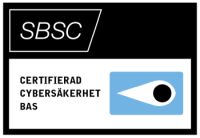Beskrivning
This course gives network administrators, network operators, and network engineers a functional understanding of the BIG-IP system as it is commonly deployed in an application delivery network. The course introduces students to the BIG-IP system, its configuration objects, how it processes traffic, and how typical administrative and operational activities are performed. The course includes lecture, hands-on labs, interactive demonstrations, and discussions.
Topics covered in this course Include:
v16.1 Course Topics
- Getting started with the BIG-IP system
- Traffic processing with BIG-IP Local Traffic Manager (LTM)
- Using the TMSH (TMOS Shell) command line interface
- Using NATs and SNATs
- Monitoring application health and managing object status
- Modifying traffic behavior with profiles, including SSL offload and re-encryption
- Modifying traffic behavior with persistence, including source address affinity and cookie persistence
- Troubleshooting the BIG-IP system, including logging (local, high-speed, and legacy remote logging), and using tcpdump
- User roles and administrative partitions
- vCMP concepts
- Customizing application delivery with iRules
Objectives
v16.1 COURSE OUTLINE
Chapter 1: Setting Up the BIG-IP System
Introducing the BIG-IP System
Initially Setting Up the BIG-IP System
Archiving the BIG-IP Configuration
Leveraging F5 Support Resources and Tools
Chapter 2: Traffic Processing Building Blocks
Identifying BIG-IP Traffic Processing Objects
Network Packet Flow
Configuring Virtual Servers and Pools
Load Balancing Traffic
Viewing Module Statistics and Logs
Using the Traffic Management Shell (TMSH)
Understanding the TMSH Hierarchical Structure
Navigating the TMSH Hierarchy
Managing BIG-IP Configuration State and Files
BIG-IP System Configuration State
Loading and Saving the System Configuration
Shutting Down and Restarting the BIG-IP System
Saving and Replicating Configuration Data (UCS and SCF)
Chapter 3: Using NATs and SNATs
Address Translation on the BIG-IP System
Mapping IP Addresses with NAT
Solving Routing Issues with SNATs
Configuring SNAT Auto Map on a Virtual Server
Monitoring for and Mitigating Port Exhaustion
Chapter 4: Monitoring Application Health
Introducing Monitors
Types of Monitors
Monitor Interval and Timeout Settings
Configuring Monitors
Assigning Monitors to Resources
Managing Pool, Pool Member, and Node Status
Using the Network Map
Chapter 5: Modifying Traffic Behavior with Profiles
Introducing Profiles
Understanding Profile Types and Dependencies
Configuring and Assigning Profiles
Understanding the Need for Persistence
Introducing Source Address Affinity Persistence
Introducing Cookie Persistence
Introducing SSL Offload and SSL Re-Encryption
Managing Object State
Chapter 6: Administering the BIG-IP System
Configuring Logging
Legacy Remote Logging
Introducing High Speed Logging (HSL)
High-Speed Logging Filters
HSL Configuration Objects
Configuring High Speed Logging
Using TCPDUMP on the BIG-IP System
Leveraging the BIG-IP iHealth System
Viewing BIG-IP System Statistics
Defining User Roles and Administrative Partitions
Leveraging vCMP
Chapter 7: Customizing Application Delivery with iRules
Identifying iRules Components
Triggering iRules with Events
Leveraging the iRules Ecosystem on DevCentral
Audience
This course is intended for network administrators, operators, and engineers responsible for managing the normal day-to-day operation and administration of a BIG-IP application delivery network. This course presents the prerequisite knowledge for many other of F5’s BIG-IP instructor-led training courses.
Prerequisites
There are no required F5 prerequisites for this course. The following free web-based training courses, although optional, will be very helpful for any student with limited BIG-IP administration and configuration experience. These courses are available at F5 University:
Getting Started with BIG-IP web-based training
Getting Started with BIG-IP Local Traffic Manager (LTM) web-based training
The following general network technology knowledge and experience are recommended before attending any F5 Global Training Services instructor-led course:
OSI model encapsulation
Routing and switching
Ethernet and ARP
TCP/IP concepts
IP addressing and subnetting
NAT and private IP addressing
Default gateway
Network firewalls
LAN vs. WAN
More information – F5 Webpage under ”Education”
Programme
v14 COURSE OUTLINE
Chapter 1: Setting Up the BIG-IP System
•Introducing the BIG-IP System
•Initially Setting Up the BIG-IP System
•Configuring the Management Interface
•Activating the Software License
•Provisioning Modules and Resources
•Importing a Device Certificate
•Specifying BIG-IP Platform Properties
•Configuring the Network
•Configuring Network Time Protocol (NTP) Servers
•Configuring Domain Name System (DNS) Settings
•Configuring High Availability Options
•Archiving the BIG-IP Configuration
•Leveraging F5 Support Resources and Tools
Chapter 2: Traffic Processing Building Blocks
•Identifying BIG-IP Traffic Processing Objects
•Configuring Virtual Servers and Pools
•Load Balancing Traffic
•Viewing Module Statistics and Logs
•Using the Traffic Management Shell (TMSH)
•Understanding the TMSH Hierarchical Structure
•Navigating the TMSH Hierarchy
•Managing BIG-IP Configuration State and Files
•BIG-IP System Configuration State
•Loading and Saving the System Configuration
•Shutting Down and Restarting the BIG-IP System
•Saving and Replicating Configuration Data (UCS and SCF)
Chapter 3: Using NATs and SNATs
•Address Translation on the BIG-IP System
•Mapping IP Addresses with NATs
•Solving Routing Issues with SNATs
•Configuring SNAT Auto Map on a Virtual Server
•Monitoring for and Mitigating Port Exhaustion
Chapter 4: Monitoring Application Health
•Introducing Monitors
•Types of Monitors
•Monitor Interval and Timeout Settings
•Configuring Monitors
•Assigning Monitors to Resources
•Managing Pool, Pool Member, and Node Status
•Using the Network Map
Chapter 5: Modifying Traffic Behavior with Profiles
•Introducing Profiles
•Understanding Profile Types and Dependencies
•Configuring and Assigning Profiles
•Introducing SSL Offload and SSL Re-Encryption
•Managing Object State
Chapter 6: Modifying Traffic Behavior with Persistence
•Understanding the Need for Persistence
•Introducing Source Address Affinity Persistence
•Managing Object State
Chapter 7: Administering the BIG-IP System
•Configuring Logging
•Legacy Remote Logging
•Introducing High Speed Logging (HSL)
•High-Speed Logging Filters
•HSL Configuration Objects
•Configuring High Speed Logging
•Using TCPDUMP on the BIG-IP System
•Leveraging the BIG-IP iHealth System
•Viewing BIG-IP System Statistics
•Defining User Roles and Administrative Partitions
•Leveraging vCMP
Chapter 8: Configuring High Availability
•Introducing Device Service Clustering (DSC)
•Preparing to Deploy a DSC Configuration
•Configuring DSC Communication Settings
•Establishing Device Trust
•Establishing a Sync-Failover Device Group
•Synchronizing Configuration Data
•Exploring Traffic Group Behavior
•Understanding Failover Managers and Triggers
•Achieving Stateful Failover with Mirroring







Recensioner
Det finns inga recensioner än.